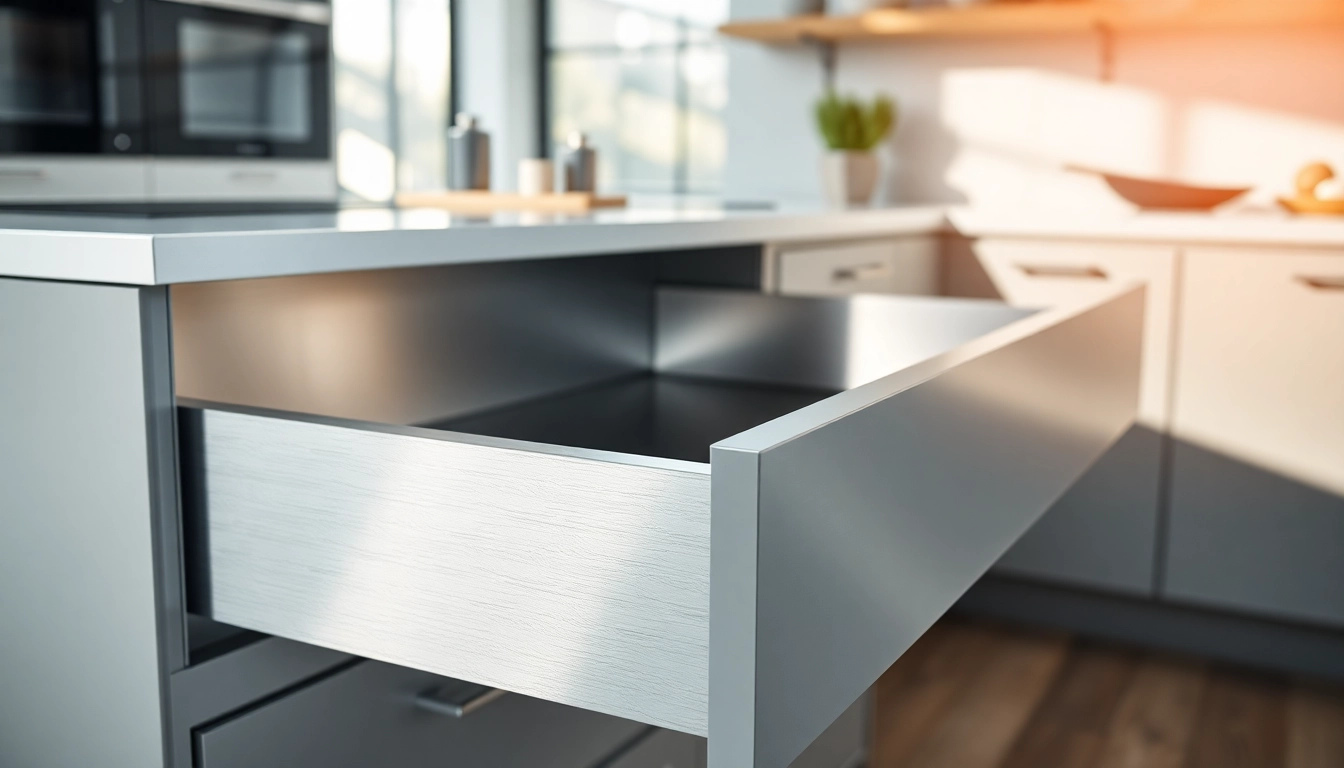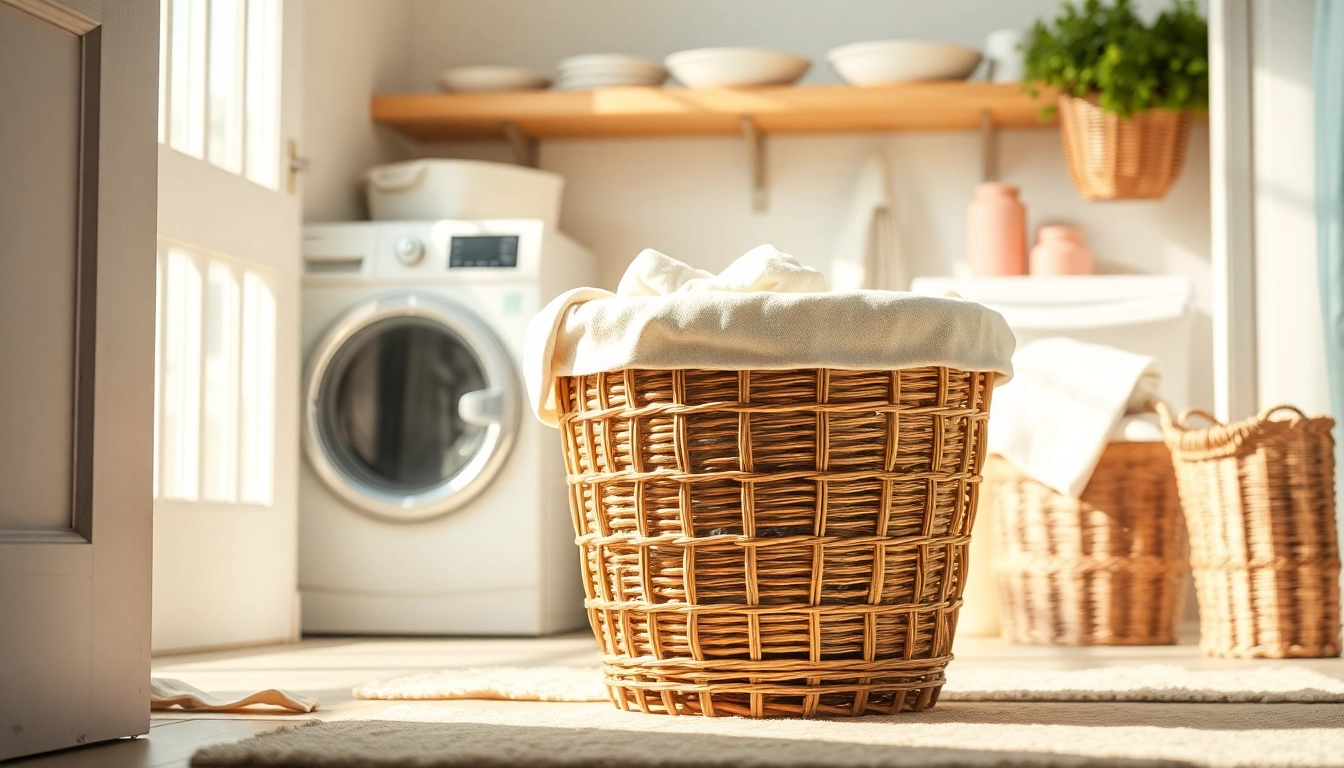Understanding Metal Drawer Systems
In today’s world, efficient storage solutions are pivotal for maximizing space in homes and businesses alike. Among the multitude of storage options available, metal drawer systems have surged in popularity. These systems combine durability with functionality, making them a preferred choice for a variety of applications. In this article, we will explore the intricacies and benefits of metal drawer systems, how to select the right option for your needs, installation processes, maintenance practices, and future trends shaping this industry.
What is a Metal Drawer System?
A metal drawer system typically consists of drawer boxes made from high-quality metal, supported by guide mechanisms that help the drawers slide in and out smoothly. Unlike traditional wooden drawers, metal drawer systems are designed to offer enhanced longevity, load-bearing capacity, and a sleek aesthetic. These systems are utilized in diverse environments, ranging from residential kitchens to commercial office spaces, workshops, and storage facilities.
Key Components of Metal Drawer Systems
Understanding the components of a metal drawer system is crucial for both selection and maintenance. The primary components include:
- Drawer Boxes: Typically made of steel or aluminum, these boxes come in varying depths and widths, allowing for flexibility in design and usage.
- Drawer Slides: These are the mechanisms that enable the drawers to open and close fluidly. Common types include ball-bearing slides and undermount slides, which offer different benefits around noise and ease of use.
- Mounting Hardware: Includes brackets and screws required to secure the drawer slides to both the drawer boxes and the furniture or cabinetry.
- Accessories: Optional elements such as soft-close or self-close mechanisms that enhance user experience and functionality.
Advantages of Using Metal Drawer Systems
Metal drawer systems offer several advantages over their wooden counterparts:
- Durability: Metallurgical engineering allows for resistance against wear and tear, particularly in high-traffic areas.
- Capacity: Steel drawers can hold more weight compared to wooden ones, making them suitable for heavier items.
- Aesthetic Versatility: Metal finishes can be sleek and modern, fitting well in contemporary design schemes.
- Maintenance: Metal is generally easier to clean and does not require periodic treatments like wood, such as varnishing or polishing.
- Security: Metal drawers can be designed with locking features, making them ideal for storing valuable items in commercial settings.
Choosing the Right Metal Drawer System
Factors to Consider When Selecting a Metal Drawer System
Choosing the right metal drawer system involves a few critical considerations:
- Load Capacity: Identify the weight of items you intend to store. Select a system designed for that load to avoid failures.
- Space Requirements: Measure the allocated space for the drawer and ensure the system fits without hindrance.
- Functionality: Consider if you need features like soft-close mechanisms or specific slide types to suit your usage habits.
- Design Preferences: Look for finishes and styles that complement your interior design, whether commercial or residential.
Comparing Different Types of Metal Drawer Systems
Metal drawer systems come in various forms, each with distinct features:
- Ball-Bearing Slides: These provide smooth operation and are often preferred for drawers used frequently.
- Undermount Slides: Ideal for concealed installations, these slides maximize the visible space of drawers while ensuring a clean, modern appearance.
- Heavy-Duty Systems: Engineered for significant load-bearing and robustness, these systems are necessary for storing tools or hardware.
- Adjustable Drawer Systems: Allow for customization in height adjustments, ensuring maximum usability as needs change over time.
Identifying Your Needs: Residential vs. Commercial Use
Your choice of a metal drawer system should align closely with its intended use. For residential applications, the focus might be on aesthetic compatibility and space efficiency, whereas, in commercial environments, durability, and ease of access may take precedence.
In homes, you might prefer aesthetically pleasing options with integrated soft-close features, particularly for kitchens or living areas. In an office or workshop setting, however, functionality might be the priority, leading you to select heavier, more robust drawer systems capable of withstanding significant daily use.
Installation of Metal Drawer Systems
Tools Required for Installation
The installation of metal drawer systems can be straightforward if you have the right tools. Essential tools include:
- Drill and drill bits
- Screwdriver (flat and Phillips)
- Level to ensure proper alignment
- Measuring tape for accurate dimensions
- Clamps to hold components in place during installation
Step-by-Step Installation Process
Follow these steps for an efficient installation:
- Measure the Area: Accurate measurements of the cabinet or workspace are crucial for a fitting installation.
- Prepare the Drawer Boxes: Assemble the drawer boxes according to the manufacturer’s instructions.
- Attach the Slides: Secure the chosen slides to the drawer boxes and the cabinet structure, using the drill and screws provided.
- Align and Secure: Ensure that the slides are level and aligned and tighten the screws securely.
- Test Functionality: Once installed, test the drawer system for smooth operation and adjustments if necessary.
Common Mistakes to Avoid
While most installations can be done easily, some common mistakes might lead to performance issues:
- Incorrect Measurements: Always double-check your measurements to avoid a misfit.
- Ignoring Weight Ratings: Ensure the chosen drawer system can tolerate the weight you plan to store.
- Improper Slide Installation: Missing screws or misalignment can result in operational problems.
Maintaining Metal Drawer Systems
Cleaning and Care Tips
Cleansing metal drawer systems properly helps in extending their lifespan. Consider these tips:
- Regularly dust and wipe down surfaces with a damp cloth to prevent stain buildup.
- Avoid abrasive cleaners that could scratch the metal surface.
- Inspect the slides for grease and lint buildup and clean them periodically for smooth operation.
Troubleshooting Common Issues
Even the best systems can encounter problems. Here are some common issues and solutions:
- Drawer Sticking: This can result from obstructions; check for foreign objects or ensure smooth application of lubricant.
- Uneven Sliding: This might result from improper installation; re-check slide alignments and adjust if necessary.
- Loose Drawers: Tighten screws on the slides to ensure stability and operation.
When to Replace Your Metal Drawer System
It’s critical to know when it’s time for an upgrade:
- Visible wear and tear, such as rust or deep scratches.
- If the system consistently fails to operate smoothly, despite troubleshooting.
- When operational capacity no longer meets your storage needs.
Future Trends in Metal Drawer Systems
Innovations and Technological Advances
The metal drawer system market is poised for rapid evolution, driven by shifts in technology. Innovations such as smart drawer systems with built-in sensors for inventory tracking are emerging. Customization through modular designs is also on the rise, catering to specific storage needs while maintaining an appealing appearance.
Eco-Friendly Options in Metal Drawer Systems
As sustainability becomes a paramount concern, manufacturers are producing eco-friendly metal drawer systems. These advancements include:
- Using recycled materials without compromising durability.
- Eco-friendly coating finishes that are free of harmful substances.
- Designs that promote energy efficiency in manufacturing processes.
Predictions for Metal Drawer System Designs
Looking ahead, design trends are slated to focus on modularity and aesthetic integration. Drawers that blend seamlessly with furniture and cabinets will be favored, along with multi-functional designs that serve multiple purposes without sacrificing elegance. Indeed, the future of metal drawer systems looks bright, combining innovation with practicality.


